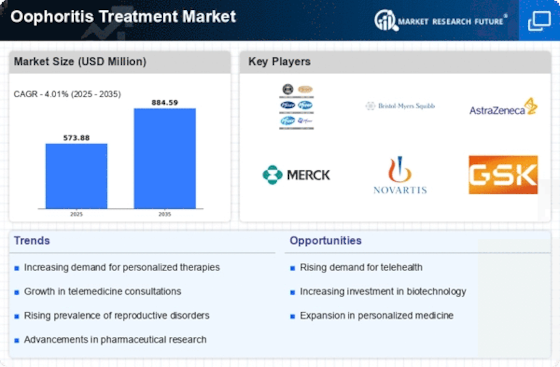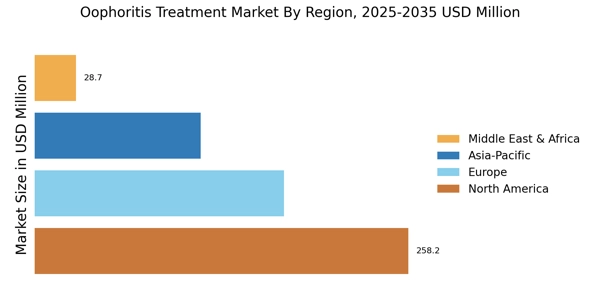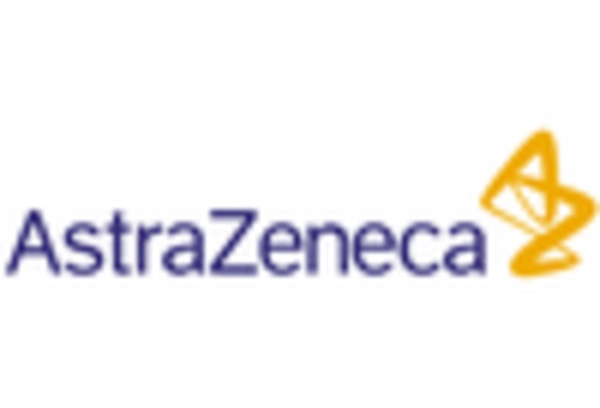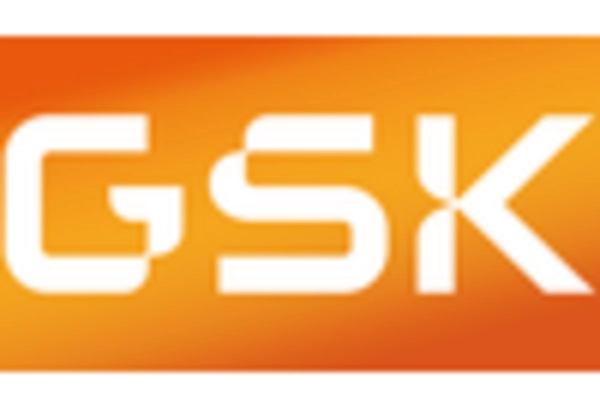Rising Incidence of Oophoritis
The increasing incidence of oophoritis is a primary driver for the Oophoritis Treatment Market. Factors such as rising rates of sexually transmitted infections and pelvic inflammatory disease contribute to this trend. According to health statistics, the prevalence of oophoritis has shown a notable increase, particularly among women of reproductive age. This rise necessitates effective treatment options, thereby propelling market growth. As healthcare providers become more aware of the condition, the demand for targeted therapies is likely to escalate. Furthermore, the growing emphasis on women's health issues has led to increased funding and research into oophoritis, which may further enhance treatment options available in the market.
Increased Awareness and Education
The growing awareness and education surrounding oophoritis significantly influence the Oophoritis Treatment Market. Public health campaigns and educational initiatives aimed at informing women about reproductive health issues have led to a greater understanding of oophoritis and its implications. This heightened awareness encourages women to seek medical attention sooner, which can lead to earlier diagnosis and treatment. Consequently, healthcare providers are witnessing an uptick in patient inquiries and consultations related to oophoritis. As more women become informed about the symptoms and risks associated with the condition, the demand for effective treatment options is likely to rise, thereby driving market growth. This trend underscores the importance of continued education in promoting women's health.
Advancements in Medical Technology
Technological advancements play a crucial role in shaping the Oophoritis Treatment Market. Innovations in diagnostic tools, such as advanced imaging techniques and biomarkers, facilitate early detection and more effective management of oophoritis. The integration of telemedicine has also transformed patient access to care, allowing for timely consultations and follow-ups. Moreover, the development of minimally invasive surgical techniques has improved treatment outcomes, reducing recovery times and hospital stays. As these technologies continue to evolve, they are expected to enhance the efficacy of oophoritis treatments, thereby attracting more patients and healthcare providers to the market. The ongoing research into novel therapeutic agents further indicates a promising future for the industry.
Growing Investment in Women's Health
Investment in women's health initiatives is a significant driver for the Oophoritis Treatment Market. Governments and private organizations are increasingly recognizing the need to address women's health issues, including reproductive health conditions like oophoritis. This recognition has led to increased funding for research and development of new treatment modalities. Additionally, partnerships between pharmaceutical companies and research institutions are fostering innovation in the treatment landscape. As more resources are allocated to women's health, the availability of effective therapies for oophoritis is expected to expand. This trend not only enhances treatment options but also raises awareness about the condition, potentially leading to earlier diagnosis and intervention.
Regulatory Support for Treatment Innovations
Regulatory support for innovative treatments is a key driver in the Oophoritis Treatment Market. Regulatory agencies are increasingly streamlining the approval processes for new therapies, which encourages pharmaceutical companies to invest in research and development. This supportive environment fosters the introduction of novel treatment options for oophoritis, including biologics and targeted therapies. As these innovations receive regulatory backing, they are likely to gain traction in the market, offering patients more effective solutions. Furthermore, the emphasis on patient-centered care aligns with regulatory trends, promoting treatments that are tailored to individual needs. This alignment may enhance patient outcomes and satisfaction, further driving market growth.


















Leave a Comment